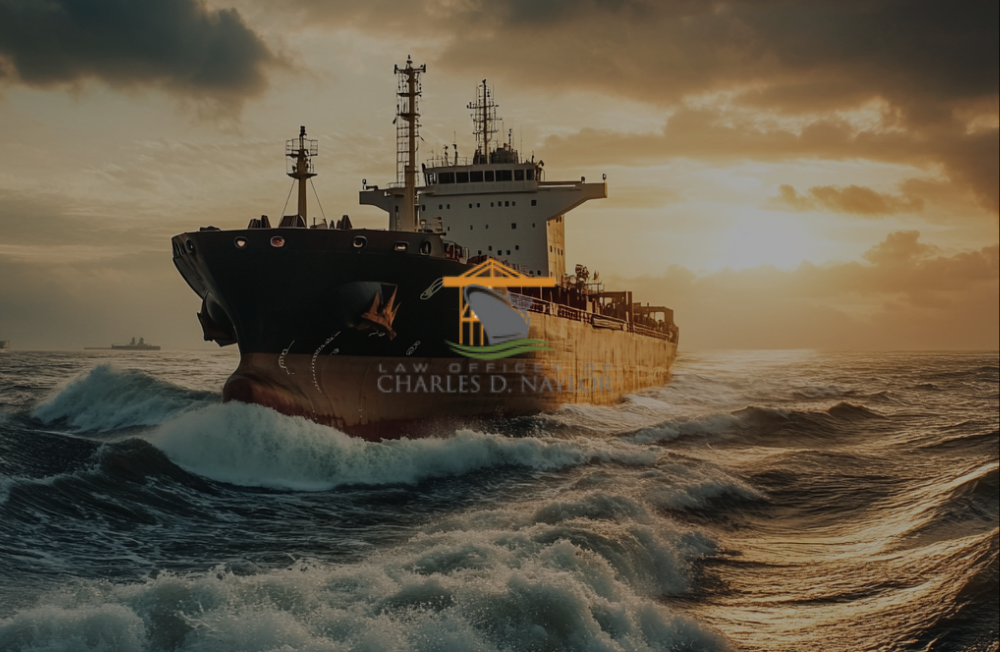When a maritime employer’s negligence manifests as a failure to put procedures in place, seamen can suffer catastrophic injuries that ripple through their lives.
A failure to put procedure in place, attorney advocates under the Jones Act to hold negligent employers accountable for not establishing safety protocols, maintenance checks, or proper lookout procedures.
Whether on cruise ships, cargo vessels, or offshore platforms, these cases hinge on proving that a lack of standard operating procedures directly caused the injured worker’s harm.

Understanding Failure to Put Procedure in Place
The brutal nature of maritime employment calls for strict safety precautions. When a marine employer’s negligence shows up as a lack of policies in place, sailors risk catastrophic injuries that will affect their lives and leave long-lasting emotional, financial, and physical scars.
The suffering is often lessened by the sense of betrayal when simple safety precautions may have avoided an injury.
Working diligently to hold irresponsible employers responsible for not establishing basic safety protocols, sufficient vessel maintenance checks, or rigorous lookout procedures, a failure to put process in place attorney specializing in Jones Act lawsuits is a critical advocate for wounded seafarers.
Don’t suffer in silence if your company neglects required safety precautions and causes you injuries.
Contact the Law Offices of Charles D. Naylor today for a free consultation to understand your rights and explore your legal options with a dedicated failure to put procedure in place attorney.
Whether your work takes you aboard cruise ships, cargo vessels navigating treacherous waters, or demanding offshore platforms, these cases hinge on proving that a direct link exists between the employer’s lack of standard operating procedures and the injured worker’s resulting harm.
Our experienced maritime attorneys are here to help you navigate these complex legal waters.
Maritime & Jones Act Attorney for Claims of Failing to Put Procedures in Place
Under the Jones Act, marine companies owe sailors a duty of reasonable care, including adopting written policies to prevent mishaps.
If an employer neglect to implement policies including maintenance procedures, fire response activities, or emergency drills, and a seaman suffers injuries, the affected person might file a negligence lawsuit.
A specialized maritime attorney from the Law Offices of Charles D. Naylor brings deep experience in admiralty and maritime law to navigate federal statutes, defend seamen’s rights, and secure full compensation. Learn more about our cruise ship injury attorney practice.
What Are The Most Common Reasons for Failure to Put Procedures in Place?
A failure to put procedures in place by maritime employers can stem from a variety of negligent oversights, each significantly increasing the risk of injury to seamen:
Cost-Cutting Pressures:
The constant quest to reduce running costs can cause companies to make risky decisions, such as missing regular maintenance on necessary machinery or disregarding vital safety drills
This short-sighted approach leaves critical systems untested and produces an intrinsically dangerous workplace where mishaps become significantly more likely.
Lack of Adequate Oversight:
Management staff members who lack a complete awareness of complicated maritime regulations, including those mandated by SOLAS (Safety of Life at Sea) and STCW (Standards of Training, Certification and Watchkeeping for Seafarers), may fail to implement or regularly enforce required standard operating procedures.
Moreover, they could ignore essential changes to these rules, leaving the crew to work under antiquated and maybe dangerous rules.
Inadequate Crew Training:
They become meaningless if the staff are not adequately equipped to carry out even the most painstakingly established safety protocols.
A failure to invest in thorough crew training on emergency protocols, equipment operation, and general safety measures often goes hand-in-hand with failing to put processes in place.
Without this real, hands-on training, written protocols remain abstract ideas, and in critical events, the crew would not be ready to react.
Poor Communication and Language Barriers:
Language problems and poor communication can seriously hinder precise and efficient safety operations in the maritime sector, where international workers are common.
Suppose important operational or emergency procedures are not clearly explained or translated into languages all crew members understand. In that case, key processes can be readily missed or misread, significantly increasing the danger of accidents.
In this regard, a lack of process entails unsuccessful communication plans.
Seamen who suffer injuries resulting from these careless mistakes need a qualified failure to put process in place attorney with thorough knowledge of the strict liability rules set by the Jones Act and the demanding operational reality of the maritime sector.
Does Failure to Put Procedure in Place Fall Under The Jones Act?
Yes. The Jones Act imposes a duty of reasonable care on maritime employers, meaning they must establish and enforce safety procedures appropriate to vessel operations.
“Failure to put procedures in place” is recognized as a form of negligence under the Act, enabling seamen to recover for injuries caused by that negligence.
This claim parallels other Jones Act causes of action, such as “negligence of crew” and “duty of reasonable care,” but focuses squarely on procedural omissions that directly lead to harm.m
What Are Some Common Injuries That Can Occur?
The lack of appropriate protocols is a matter of regulatory control and an open invitation to avoidable injury, exposing seafarers to risks that may have been completely prevented or minimised.
When companies neglect their basic responsibility, the human cost can be severe, resulting in injuries, long-lasting suffering, and life disturbance.
Slip and Falls
Without clear watch protocols or non-slip flooring procedures, seamen risk falls on wet decks or ladderways
Back Injuries
Poor cargo-handling procedures and lack of ergonomic training lead to severe lumbar strains and herniated discs
Burns
Inadequate fire drills and missing hot-work permits can result in thermal and chemical burns.
Crushing Injuries
Improper lockout/tagout procedures on machinery expose seamen to life-altering crush injuries.
Repetitive Stress Injuries
Lack of rotation schedules and lifting guidelines triggers chronic tendonitis and carpal tunnel.
Head Injuries
Absence of helmet requirements or hazard signage causes traumatic brain injuries when struck by overhead cranes or falling objects.
Injuries Sustained From Unseaworthy Conditions
Procedural failures to maintain hull integrity or lifeboat readiness create unseaworthy vessel claims under 46 U.S. Code § 30106.
Please realize that you are not alone and you have rights if you or a loved one has experienced any of these preventable injuries from an employer’s neglect of a process in place.
Get a free, private consultation by calling the Law Offices of Charles D. Naylor right now.
Our experienced failure to put procedure in place attorneys are dedicated to fighting for justice and the compensation you deserve.
46 U.S Code § 30106
Section 30106 of Title 46 codifies seamen’s rights for injuries due to unseaworthy conditions, including procedural omissions. A claim under this provision complements Jones Act negligence actions, widening avenues for recovery when employers fail to keep vessels seaworthy and safe.
US Code Chapter 303 – Death on High Seas
For fatal accidents attributable to procedural lapses beyond state waters, survivors may pursue relief under Chapter 303 of Title 46 (“Death on the High Seas Act”), enabling wrongful-death suits for deaths occurring beyond three nautical miles from shore.
Types of Procedures Commonly Required
The maritime sector runs under a strong framework of international rules and conventions meant to secure the safety of life at sea, safeguard the marine environment, and enable effective operations.
Consequently, a failure to put procedure in place in any of these areas can have severe repercussions. Among the most often needed categories of surgeries are:
Safety procedures
Emergency drills, fire prevention plans, hazard communication, and lockout/tagout protocols are mandatory under SOLAS and STCW.
Environmental procedures
Waste management, oily-water separator use, and oil-spill response align with MARPOL conventions.
Operational procedures
Navigation bridge protocols, cargo securing plans, and engine-room checklists reduce collision and fire risks.
Reporting and documentation requirements
Incident logs, near-miss records, and maintenance reports ensure accountability and continuous improvement.
The absence or inadequacy of these types of procedures can expose seamen to significant risks and form the basis of a failure to put procedure in place attorney’s case under the Jones Act.
Consequences of Failing to Establish or Follow Procedures
Legal liability and negligence claims
The Jones Act allows damaged seamen to sue their companies for negligence. Strong proof of neglect is an apparent absence of a process implemented.
Moreover, under marine law, the unseaworthiness theory holds vessel owners strictly accountable for accidents resulting from a vessel or its equipment being unsuitable for their intended usage.
Lack of required safety or operational protocols can immediately lead to a vessel being judged unseaworthy, opening two legal claims routes against the employer.
Administrative penalties and detentions
Comprising thorough guidelines for safety, environmental protection, crew welfare, and operational practices, international conventions including SOLAS (Safety of Life at Sea), MARPOL (International Convention for the Prevention of Pollution from Ships), STCW (Standards of Training, Certification and Watchkeeping for Seafarers), and the Maritime Labour Convention (MLC) 2006.
The U.S. Coast Guard or other port state control agencies may impose significant administrative fines depending on failure to adopt or follow policies adhering to these standards.
Vessels discovered in breach will also be detained, and expensive delays and disruptions to their business activities could follow from this.
Increased insurance premiums or denial of coverage
Companies providing maritime insurance carefully evaluate the risk profiles of the vessels and operators under coverage.
Future claims are more likely in a history of mishaps, legal infractions, or recorded failures to follow and apply basic policies.
Consequently, vessel owners and operators with a bad record in this field could significantly increase their insurance premiums or, in extreme situations, even be denied coverage completely, making their activities financially unsustainable.
Reputational damage and loss of business
News of marine catastrophes, especially those related to negligence and a lack of processes in place, can quickly travel in the interconnected world of today. Such events might tarnish a company’s standing with the public, potential passengers, and the larger marine sector. A significant loss of commercial possibilities, trouble obtaining favorable contracts, and long-term damage to the company’s brand and standing within the competitive maritime industry can all follow this eroding confidence.
Four Pillars for Safety, Environment, Training, and Working Conditions
Industry best practices rest on four pillars—Safety, Environment, Training, and Working Conditions—integrated into SOLAS, MARPOL, STCW, and MLC 2006 conventions.
Effective procedures across these pillars are critical to preventing negligence claims.
SOLAS
The International Convention for the Safety of Life at Sea mandates onboard safety systems, drills, and fire-control procedures, forming the bedrock of maritime operational safety
MARPOL
MARPOL conventions require procedures for pollution prevention, waste handling, and emergency response for oil spills—failures of which can lead to both environmental harm and seaman injuries
STCW
Standards of Training, Certification and Watchkeeping for Seafarers stipulate minimal training procedures and watch schedules; lapses here often underpin “failure to follow standard operating procedures” claims
MLC 2006
The Maritime Labour Convention requires humane working conditions, rest hours, and onboard health and safety procedures—violations contribute to fatigue-related accidents and procedural omissions.
Why It Could Benefit You To Work With a Failure to Put Procedure in Place Attorney Who Specializes in Jones Act Claims
Choosing the right attorney matters. The Law Offices of Charles D. Naylor offers:
Decades of Maritime Focus:
Proven track record in Jones Act and unseaworthiness cases.
Nationwide Representation:
Serving seamen injured across U.S. ports and offshore installations.
Resource Network:
Close ties with maritime experts, medical specialists, and accident reconstructionists.
Client-First Service:
24/7 hotline via our cruise injury hotline and no fees unless we win.
Contact the Jones Act Lawyers at Law Offices of Charles D. Naylor for Questions or a FREE Consultation
If you or a loved one suffered injury due to a failure to put a procedure in place aboard a vessel, call the Law Offices of Charles D. Naylor today at Contact Us or request a free case review. Our maritime attorneys fight for your rights under the Jones Act and related admiralty laws.
Failure to Put Procedure in Place Frequently Asked Questions
What defines “failure to put procedure in place”?
It’s employer negligence in not establishing or enforcing safety, environmental, or operational procedures required by maritime law.
Does this claim only apply to seamen?
Yes—a claimant must qualify as a seaman under Jones Act criteria to pursue such negligence.
Can I recover if the accident occurred on a cruise ship?
Cruise ship crew injured by procedural failures can pursue Jones Act claims; passengers may have separate general maritime law remedies—see our cruise ship injury attorney page.
What is the statute of limitations?
Jones Act negligence and unseaworthiness claims must be filed within three years of injury.
How do I prove a procedural failure caused my injury?
Your attorney will gather vessel records, training logs, accident reports, and expert testimony to demonstrate causation and breach of duty.









